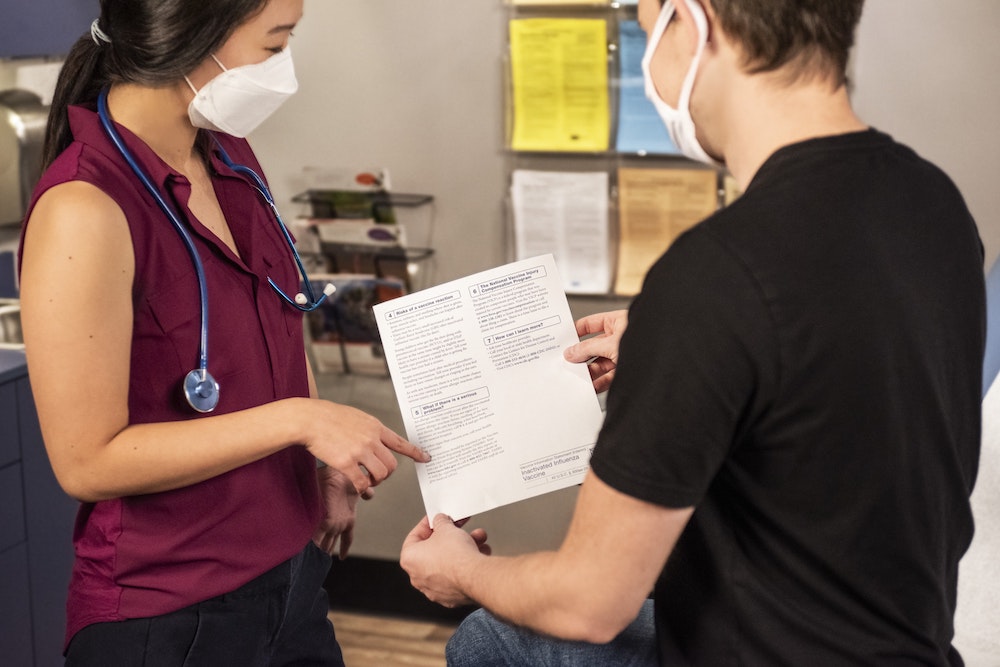About this time every year we start getting emails (or slack notifications?) from our HR or benefits department reminding us that open enrollment is upon us. Despite your urge to ignore or only loosely pay attention to this annual task, it’s actually quite important and can have big financial implications if you end up choosing incorrectly. In an attempt to help out during this oh so important time of year, here are some basic definitions for what you’re signing up for, how it can help, how I view it and what I’m doing differently in 2023.
BENEFIT TYPE: HEALTH INSURANCE
What it is: Sooner or later in one way or another you’re going to get sick or hurt and need some medical attention, or even just for annual check-ups. Unless you’re able and don’t mind paying cash (out of pocket) for all these services, you’ll likely benefit from having health insurance. Health insurance provides a great safety net for both standard care and ‘just in case’ emergency type scenarios. For a full synopsis, check out my article on how health insurance works. Most of the time you’ll get to pick between one or two carriers (i.e. Aetna, Blue Cross, Cigna, UHC etc) and then within those get 3 options of coverage. Think of them as low, medium, high usage plans. Common names would be “HDHP” (high deductible health plan), “HMO” and “PPO”, in that order. If you’re a young invincible (yes that’s what they call young professionals who don’t go to the doctor very often), go with a “low usage plan”. If you have medical conditions or get sick a lot, consider a “medium” or “high” usage plan (HMO or PPO). The medium/high usage plans will have higher premiums (what you pay out of your paycheck) but will have more coverage in terms of a lower deductible or lower coinsurance. So, you’ll pay more each paycheck, but when you actually go to the doctor, it’ll cost you less than a HDHP.
YMF Advice: First of all, figure out your health usage. If you go to the doctor once a year for a checkup and maybe one sick visit, you could probably go with a lower cost health plan. If however you go more often, or expect major care in the next year then a HMO/PPO would be better. Secondly, picking between insurance carriers (i.e. Aetna vs UHC in my case) should involve not only costs, but also ensuring your favorite doctors, or hospitals are close by. On the insurance website, there should be a link fairly visible letting you put in a doctor/hospital to figure out in they are ‘in-network’ (i.e. covered).
BENEFIT TYPE: HSA/FSA
What it is: The US government, as it often does, uses tax breaks to incentivize citizens to financially do things that they want. One such thing is to save for healthcare costs, as healthcare ain’t cheap and having citizens being able to pay instead of going broke, in debt or bankrupt is ideal. Tax advantaged health accounts come in two flavors: HSAs or FSAs. You can read more in this article that I’ve written. Not all health plans qualify for a HSA but if they do, you can put away money (tax free) to use for most health expenses. A FSA is similar, except that you can’t roll the money over year to year.
YMF Advice: If you have access to a HSA, I’d recommend putting some money in there. It won’t disappear if you don’t use it, and it can actually grow via interest or be invested in stocks/mutual funds, both tax free. If you only have access to a FSA, only put an amount that you know you’ll use. Better be safe instead of sorry!

BENEFIT TYPE: DENTAL/VISION INSURANCE
What it is: You should go to the dentist probably twice a year, and if you have glasses/contacts, you’ll go to the eye doctor. Most employers either offer opt in/out for this type of coverage, so it’s much simpler than health insurance. It can be helpful to read up on the benefits offered, so if your dental coverage offers only 1 visit per year, you don’t end up going twice a year and having to pay out of pocket. For vision insurance, make sure you figure out if your eye doctor takes that insurance and also figure out how much they’ll pay for each year (i.e. contacts/glasses).
YMF Advice: Get the dental coverage, your teeth will thank you, and typically it’s pretty cheap premiums. If you have glasses/contacts, get the vision insurance, if not, pass on it.
BENEFIT TYPE: LIFE INSURANCE
What it is: Life insurance will kick in and pay a large sum to your elected beneficiary(ies) in the event of your death. Employers will most likely offer term life insurance, which offer coverage as long as you pay the premiums each month. I personally find employer sponsored plans to be very affordable, and have gotten coverage through them. A lot of employers will offer, for free, basic coverage of like $50,000. If you want additional coverage, it costs a few dollars per $10Ks of additional coverage. Up to a certain amount (which will vary), you don’t have to get a doctors exam completed, which makes signing up that much easier. Once you elect your coverage amount, you put in your beneficiaries (i.e. who gets paid if you pass away). Life insurance is optional, and you very well might be ok without it.
YMF Advice: For single young professionals, the free coverage provided is likely enough. If you’re married without kids, consider upping coverage to $100-$250K. If you’ve got kids, consider upping to $500K+.
BENEFIT TYPE: 401(K) RETIREMENT
What it is: None of us want to work forever, or will be able to do so. Federally sponsored retirement (i.e. Social Security) won’t be enough (if it’s still around when us young professionals make it to 65). So, we’ll need some money set aside that we can spend in our golden years. One realistic, easy way to do so is to put your money in a 401(K), through your employer. To do so allows you do get tax benefits (i.e. pay tax now and not later, or pay no tax now and pay it later). Thanks to the power of compound interest, doing a little consistently now is worth more than a lot later. A 401(K) is nice for three reasons – a) it’s easy to setup b) comes out of your paycheck and c) likely will come with a match, which is FREE MONEY that they give you.
YMF Advice: As you’re able, contribute to your 401(K). Definitely contribute up to the match, so you’re getting all the free money you can. Saving something is better than nothing, and even saving 2% of your paycheck will add up. Start small, and increase it as you’re able. One smart way to increase your contributions is to increase it by 1% each time you get a raise. You won’t be used to that money yet and therefore won’t miss it!
WHAT’S CHANGING FOR ME IN 2023
I’m thankful to work at a company that offers great benefits and I have several options to choose from. Here are some of the changes or notable decisions in making to set myself up for success in 2023:
In 2022 we did not have a baby and therefore consumed less healthcare compared to 2021. In 2022 I went with the high deductible health plan which worked out pretty well. Thankfully we were relatively healthy outside from normal kiddo and adult sickness (we finally did get COVID in mid-2022 but thankfully neither of Mrs. Money nor I had a bad case). Last year I didn’t contribute much (maybe $500 on top of the $2,000 I get through work) to my HSA and honestly kind of regret not putting more in. I’m coming around to the idea of a HSA and how valuable it can be. You get to deduct your contributions from your taxes now, you spend it tax free, and it can be invested (haven’t done that quite yet) and grow tax free. I plan to contribute more to my HSA this coming year!
My mother-in-law who part time sells insurance continues to send me articles on why I need more life insurance but I’m still not convinced. In 2021 I did get a medium sized term-life policy for Mrs. Money and I from her, and outside of that will continue taking advantage of the low rates for life insurance that I can tap into at work.
Financially I’m going to keep contributing the max 15% to my Employee Stock Purchase program. This will be my 3rd year of maxing out this perk and although my company stock has struggled (along with most of the market), I’m still able to buy stock at a minimum of a 15% discount. Especially in this economic environment right now it’s tough to beat a 15% return over a 6 month period!
Finally, I’m definitely continuing to max out my FSA dependent care account at $5,000. Daycare is not cheap and costs more than $5,000/year but getting $5,000 set aside pre-tax goes a long way helping out! I wish the IRS would allow me to take more but they don’t so $5,000 it is! Daycare did increase our weekly tuition $50/kid so we’ll definitely use all (and more) of that $5,000. Thankfully BabyMoneyFinance is getting closer to the pre-school age where we’ll no longer have to pay for daycare!
SUMMARY
Open enrollment is such an important time of year for your health and wellness. Please take the time to understand what’s offered to you, try to think through what next year holds in store for you or your family, and definitely take advantage of any and all tax favorable accounts!
Hopefully this guide helps a bit as you think through and select your benefits. Best of luck selecting them! One quick shameless plug – I have written a much more in-depth guide on Employer Benefits that I’ve got for sale via my store. It starts at $0.99 which will help keep the lights on for this site, but do have additional add-ons that include email and a virtual meeting support.


 Personal Finances are certainly top of mind for many of us. If you're looking to get serious about improving your financial situation, we've got lots of great materials all over this site! Additionally, we realize that there's a lot of noise out there, and so we created PERSONAL FINANCIAL GUIDES focused on topics with all the info you need, and without any of the noise/ads/clickbait.
Personal Finances are certainly top of mind for many of us. If you're looking to get serious about improving your financial situation, we've got lots of great materials all over this site! Additionally, we realize that there's a lot of noise out there, and so we created PERSONAL FINANCIAL GUIDES focused on topics with all the info you need, and without any of the noise/ads/clickbait.